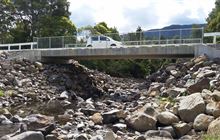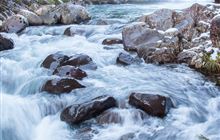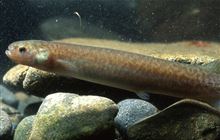Fish friendly guidelines landed
Archived content: This media release was accurate on the date of publication.
Introduction
Freshwater fish will have a better chance of survival under guidelines launched by Conservation Minister Eugenie Sage today.Date: 18 April 2018 Source: Office of the Minister of Conservation
“Some freshwater fish need to be able to move freely between lakes, rivers, streams and the ocean in order to breed but often can’t because of human made obstacles. This first set of national guidelines for fish passage should help improve the prospects for our freshwater fish,” Eugenie Sage said.
New Zealand has 77 species of freshwater fish. 57 of them are indigenous and most of these are endemic so are found nowhere else in the world. A shocking 41 of those indigenous freshwater fish species, that’s 72 per cent, are threatened with or at risk of extinction or even extinct. This is a higher proportion than almost any other country in the world.
“Many fish species, including some that used to be widespread, are now absent from many of the streams they used to occupy. Local extinction is often the result of several threats operating together. Native fish have had to contend with habitat loss from wetland drainage, declining water quality, reduced river and stream flows from water abstraction or diversion, loss of spawning sites and barriers to migration,” Ms Sage said.
“Badly designed, sited, constructed and maintained obstacles like dams, weirs and culverts which block fish and eel movement up and down waterways and between rivers and the sea is a major threat to freshwater fish.
“Native tuna/eels, are born in the sea near Tonga. Oceanic currents carry these tiny transparent creatures back to New Zealand where they enter river mouths as glass eels. They need to be able to move upstream and find somewhere to live. Eels and many of our whitebait species, which also spend part of their life at sea, are struggling. We can help them thrive by ensuring that instream structures don’t obstruct fish passage.
“The national fish passage guidelines, developed by DOC and NIWA with input from the New Zealand Fish Passage Advisory Group, will inform the planning, design, construction, management and monitoring of structures up to 4 metres high in waterways,” Ms Sage said.
The Advisory Group includes ecologists, engineers and others representing regional councils, Fish and Game, DOC, the Ministry for the Environment and other organisations involved in instream structure management.
The guidelines can be found via DOC, NIWA and MFE websites. Further summaries of the guidelines will be developed in coming months.
The launch will help mark World Fish Migration Day on 21 April.
Contact
For media queries contact:
Morwenna Grills
Email: morwenna.grills@parliament.govt.nz
Mobile: +64 27 299 5837



